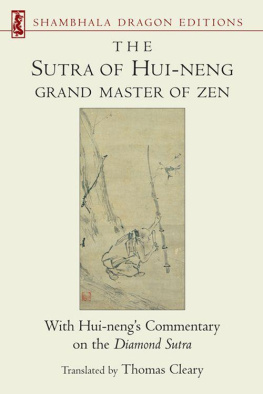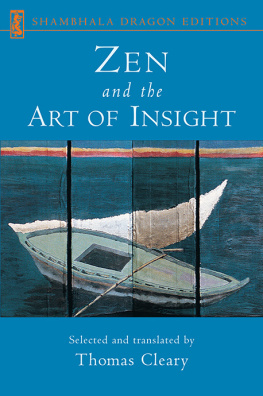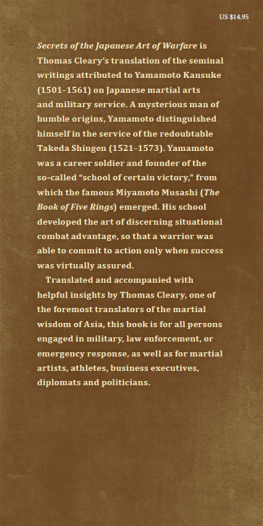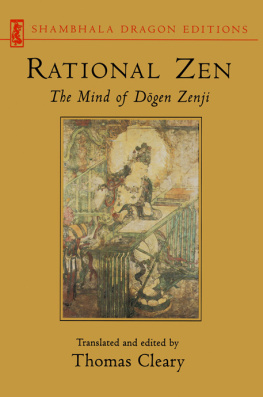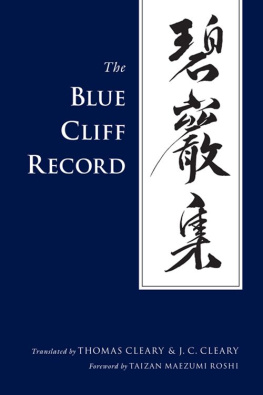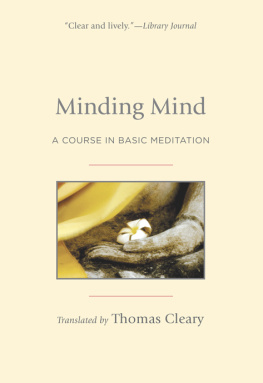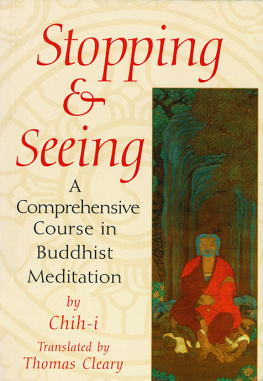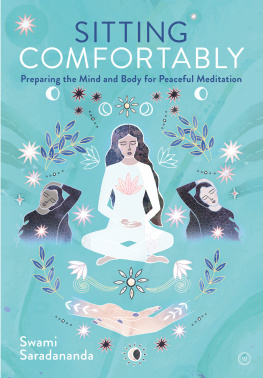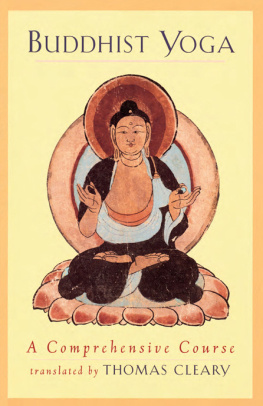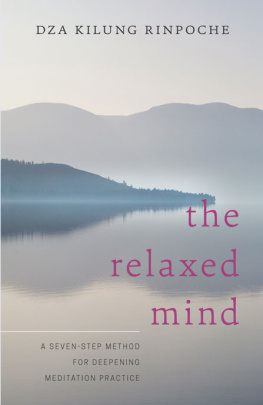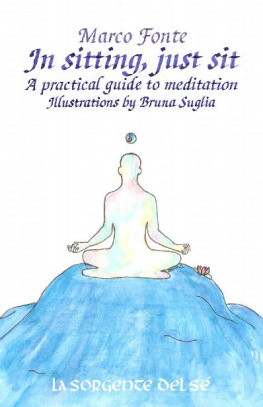Thomas Cleary - Sitting Meditation
Here you can read online Thomas Cleary - Sitting Meditation full text of the book (entire story) in english for free. Download pdf and epub, get meaning, cover and reviews about this ebook. year: 2012, genre: Religion. Description of the work, (preface) as well as reviews are available. Best literature library LitArk.com created for fans of good reading and offers a wide selection of genres:
Romance novel
Science fiction
Adventure
Detective
Science
History
Home and family
Prose
Art
Politics
Computer
Non-fiction
Religion
Business
Children
Humor
Choose a favorite category and find really read worthwhile books. Enjoy immersion in the world of imagination, feel the emotions of the characters or learn something new for yourself, make an fascinating discovery.

- Book:Sitting Meditation
- Author:
- Genre:
- Year:2012
- Rating:4 / 5
- Favourites:Add to favourites
- Your mark:
- 80
- 1
- 2
- 3
- 4
- 5
Sitting Meditation: summary, description and annotation
We offer to read an annotation, description, summary or preface (depends on what the author of the book "Sitting Meditation" wrote himself). If you haven't found the necessary information about the book — write in the comments, we will try to find it.
Sitting Meditation — read online for free the complete book (whole text) full work
Below is the text of the book, divided by pages. System saving the place of the last page read, allows you to conveniently read the book "Sitting Meditation" online for free, without having to search again every time where you left off. Put a bookmark, and you can go to the page where you finished reading at any time.
Font size:
Interval:
Bookmark:
Sitting Meditation
Translators Introduction
The author of this manual, known as the Sage of Tiantai, was one of the most famous Buddhist monks of the sixth century. He is distinguished as a specialist in meditation, ranked as a great adept and teacher in the histories of several major schools of Buddhism . While a professed Buddhist, his work also reflects a background in esoteric Taoist culture. His mother was a member of a clan associated with the highest echelons of the Maoshan sect of esoteric Taoism, and the sacred Mount Tiantai in China wher e he taught for a time was a Taoist center too . His methods, distilled from scripture, are still practiced by both Buddhists and Taoists , and have also been m secularized as means of cultivating mental and physical well being.
Sitting Meditation
Dont do anything bad, willingly do good, and purify your mind: this is the teaching of all Buddhas.
There are many ways of entry into the state of nirvana, but the most essential are not beyond the two methods of stopping and seeing. The reason for this is that stopping is the initial means of subduing bondage, while seeing is the very key to cutting through confusion. Stopping is wholesome sustenance for nurturing consciousness; seeing is the subtle art of stimulating spiritual understanding. Stopping is the overriding cause of meditation concentration; seeing is the basis of insight.
If people fully develop concentration and insight, then the elements of self-help and helping others are both available. Therefore the Lotus sutra says, Buddha himself remains on the great vehicle, and benefits people with arrangements of powers of concentration and insight like those he has attained.
It should be known that these two elements are like the two wheels of a chariot, the two wings of a bird. If you practice in an unbalanced way, you fall into error. Therefore scripture says, If you only cultivate the virtues of meditation concentration and do not learn insight, this is called stupidity. If you only study insight and do not cultivate the virtues of meditation concentration, this is called madness. The faults of madness and stupidity may differ somewhat, but they are not different in terms of the repetition of false views.
If you do not balance them, the practices will not be completehow could you rise rapidly to the ultimate result? Therefore scripture says, In listeners, the power of concentration predominates, so they dont see Buddha-nature. In bodhisattvas of the ten stages, the power of insight predominates; while they see Buddha-nature, it is not perfectly clear. In Buddhas, who have arrived at truth, the powers of concentration and insight are equal, so they see Buddha-nature perfectly. May we not deduce from this that stopping and seeing are the essential means to the great result of nirvana, the high road of cultivation for practitioners, the guide to fulfillment of virtues, the very substance of the supreme realization?
For those who know this, the teachings of stopping and seeing are not shallow at all. Therefore I want to introduce beginners and educate them so they may proceed on the path. Talk is easy, practice is harder; why should I discourse widely on profound subtleties? Now I will briefly elucidate ten concepts to show beginners the steps to climb the right path, the levels of entry into nirvana. Those who pursue this ought to be embarrassed at having difficulty doing the practices rather than be contemptuous of the elementary accessibility of this writing. If your mind accords with the meaning of the words in the blink of an eye, then your insight and resolution will be immeasurable, your spiritual liberation will be unfathomable. If you uselessly deal with the words in a state of mind contrary to what is explained, youre just wasting time, with no way to get realization. Youll be like a pauper counting anothers richeswhat benefit is there for yourself?
Fulfilling conditions
Criticizing desires
Removing covers
Adjustment
Expedients
Proper Practice
Emergence of goodness
Being aware of demons
Curing illnesses
Realizing results
I briefly cite these ten concepts to elucidate the cultivation of stopping and seeing, because these are most essential for beginners learning to sit. If you can grasp the concepts well and put them into practice, you can put your mind at ease, avoid trouble, develop concentration, produce understanding, and realize the resulting wisdom without contamination.
1. Fulfilling Conditions
Those who determine to start practice and want to cultivate stopping and seeing first need to fulfill five conditions externally. The first is keeping discipline pure, as explained in scripture, as it is based on this discipline that you can produce the meditations, concentrations, wisdom and insight to extinguish suffering. Therefore mendicants should keep the precepts pure.
There are, however, three kinds of practitioners whose degree of discipline differs. One is when people never committed the five depraved crimes before becoming a Buddhist disciple, then later meet good teachers who have them accept the three refuges and five precepts and become Buddhist disciples. If they are able to leave home and accept the ten precepts of novices, then accept the full set of precepts to become monks or nuns, and after accepting the precepts keep them pure and inviolate, these are called the top class of people who keep the precepts. Know that if these people practice stopping and seeing they are certain to realize the teachings of Buddha, just as a white garment readily absorbs dye.
Second, after people have accepted the precepts, though they commit no serious offenses, if they break a lot of the lesser precepts, but are able to repent truthfully in order to cultivate concentration, this is also called keeping the precepts pure, which can produce concentration and insight, just as a garment thats been soiled can still be dyed if it can be cleaned.
Third, once people have accepted the precepts, if they cannot keep the minor and major precepts with a firm will, and commit many offenses, according to the teaching of the small vehicle there is no way to repent of four grave offenses, but according to the teaching of the great vehicle even these can be effaced. Therefore scripture says, In Buddhism there are two kinds of healthy person: one does not do anything bad, the other is able to repent after having done wrong.
If you want to repent, you need ten elements to foster that repentance. One is clear belief in cause and effect. Second is to conceive serious fear. Third is to be deeply regretful. Fourth is to seek a way to extinguish wrong, namely the practices elucidated in the great vehicle scriptures, which should be put into practice according to the teaching. Fifth is to reveal past wrongdoing. Sixth is to stop the continuing mind. Seventh is to evoke the will to preserve the teaching. Eighth is to make a great vow to liberate people. Ninth is always remembering the Buddhas of the ten directions. Tenth is contemplating wrongdoing as having no intrinsic origin.
If you can fulfill these ten elements, arrange a place of practice, wash it clean, put on clean clothes, light incense and scatter flowers, and carry out the practices in the presence of the Three Treasures as prescribed, for one to three weeks, or one to three months, or even up to a whole year, wholeheartedly repenting of the serious wrongs you have committed, stopping only when you obtain extinction.
How do you recognize the signs of extinction of serious wrongs? When practitioners are earnestly repenting like this, if they feel their bodies light and their minds keen, and have good auspicious dreams; or then again they may have spiritual visions, or feel good states of mind emerging. Or, while sitting, they may feel their own bodies like clouds or shadows, and based on this, gradually realize the various stages of meditation. Or the mind may open up with a sense of understanding, skillfully recognize the characteristics of phenomena, and whatever scripture they hear immediately know the meaning intended, and due to this delight in the teachings and have no worries or regrets at heart.
Next pageFont size:
Interval:
Bookmark:
Similar books «Sitting Meditation»
Look at similar books to Sitting Meditation. We have selected literature similar in name and meaning in the hope of providing readers with more options to find new, interesting, not yet read works.
Discussion, reviews of the book Sitting Meditation and just readers' own opinions. Leave your comments, write what you think about the work, its meaning or the main characters. Specify what exactly you liked and what you didn't like, and why you think so.

